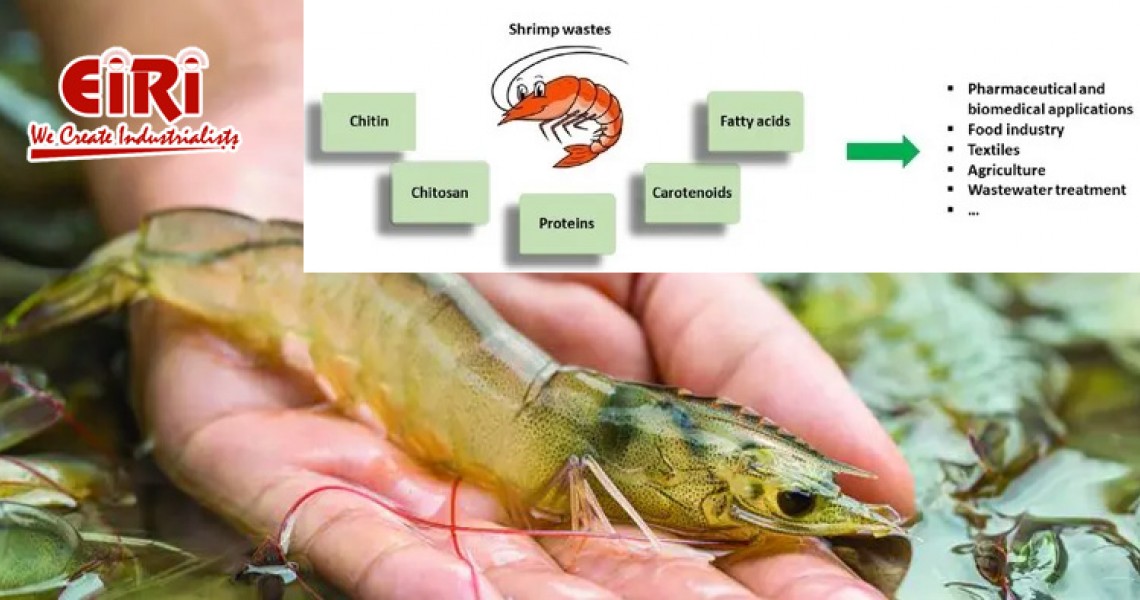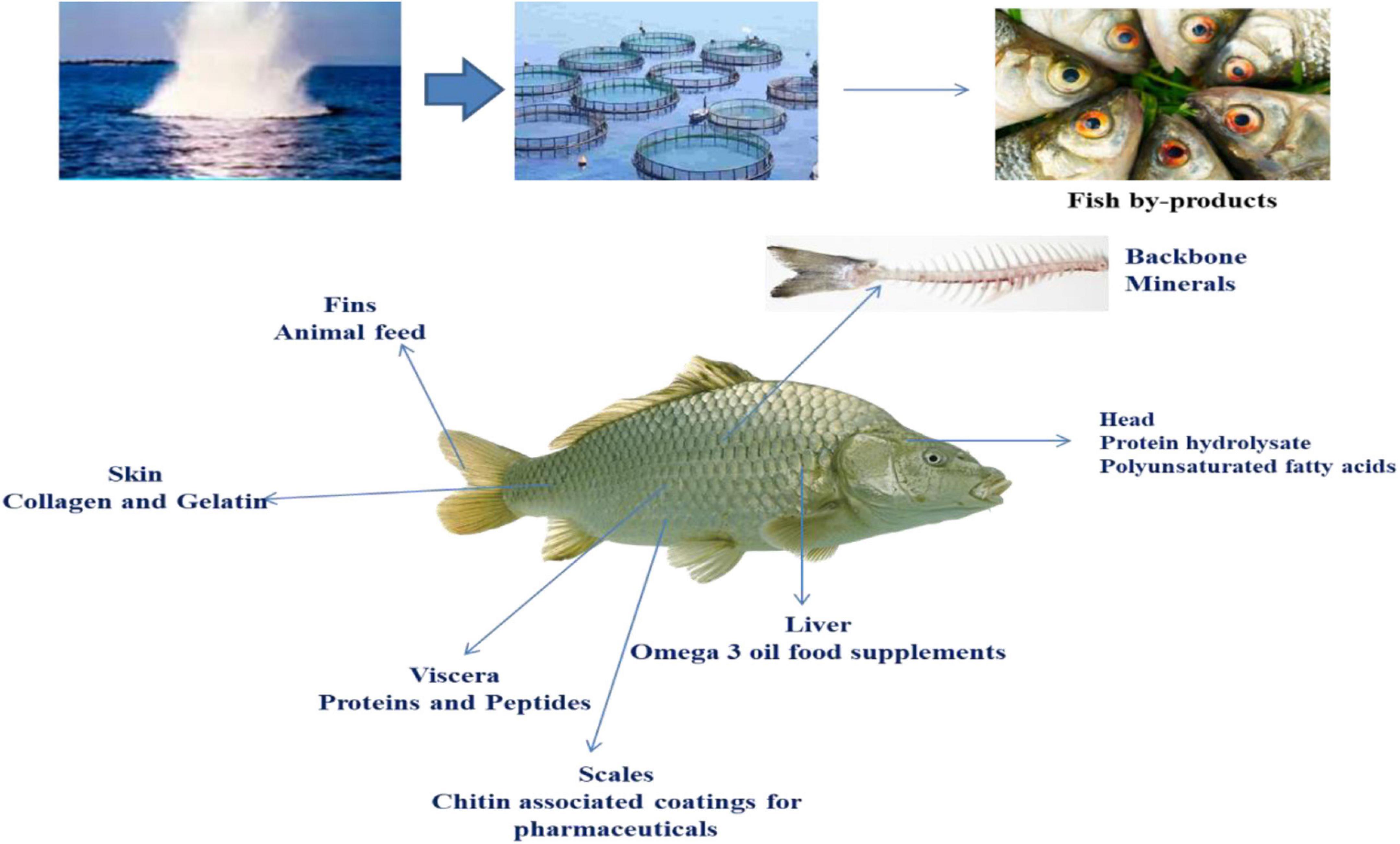Protein Hydrolysate from Shrimp/Fish Waste - Fish Waste Valorization

Fish protein hydrolysate, derived from fish waste such as bones, skulls, and viscera, is gaining traction as a highly nutritious and easily digestible protein source. This burgeoning demand is fueled by the quest for sustainable and environmentally friendly protein alternatives in animal feed, surpassing traditional sources like fish meal. Its applications extend beyond the realm of animal nutrition, finding utility in the beauty, pharmaceutical, and food industries, where its diverse benefits are increasingly recognized.
In the cosmetics sector, the utilization of fish protein hydrolysate is becoming more prevalent, particularly in anti-aging and skin-renewing products. This trend is propelled by its abundance in collagen content and antioxidant properties, addressing the needs of an aging population increasingly conscious of skincare and personal grooming. As consumer awareness continues to rise, the demand for such products is expected to escalate, further bolstering the market for fish protein hydrolysate in cosmetics.
Likewise, the pharmaceutical industry is embracing fish protein hydrolysate for its therapeutic attributes, including anti-inflammatory and antioxidant benefits. With a surge in chronic diseases and a preference for natural remedies, pharmaceutical companies are turning to fish protein hydrolysate as a viable ingredient in plant-based medications. This shift underscores the growing recognition of its efficacy and potential in enhancing human health.
Moreover, the food and beverage sectors are witnessing a surge in demand for functional products offering health benefits, such as weight management, muscle development, and immune system support. Fish protein hydrolysate, enriched with essential amino acids, peptides, and minerals, serves as a valuable ingredient in formulating such products. As health-conscious consumers seek out nutritious alternatives, the market for fish protein hydrolysate in food and beverages is poised for substantial growth.
The imperative for sustainability further amplifies the significance of fish protein hydrolysate. As a by-product of the fish processing industry, its utilization not only minimizes waste but also aligns with environmentally conscious practices. This dual benefit appeals to industries and consumers alike, driving adoption and fostering a more sustainable approach to resource utilization.
Looking ahead, the Asia Pacific region emerges as a pivotal player in the global fish protein hydrolysate market. Countries like China, India, and Japan lead the demand curve, fueled by burgeoning aquaculture and animal feed sectors. Additionally, the region's expanding population and rising living standards are anticipated to propel demand in cosmetics and pharmaceuticals, further cementing its position as a key market for fish protein hydrolysate.
In essence, the rising demand for fish protein hydrolysate underscores its versatility and potential across diverse industries. As businesses and consumers alike prioritize sustainability and health, the market for this innovative protein source is poised for robust growth, offering lucrative opportunities for entrepreneurs and stakeholders alike.

Fish Protein Hydrolysate Market Overview
The global market for fish protein hydrolysate is characterized by diverse segments, including marine fish, crustaceans, tilapia, carps, and other sources. Among these segments, marine fish are poised to lead in revenue contribution, attributed to their high protein content, particularly prevalent in species like cod, tuna, and salmon. These fish, rich in omega-3 fatty acids, are preferred for fish protein hydrolysate production, driving market growth.
Tilapia and carps are also expected to witness substantial revenue growth due to their abundant protein content and widespread availability. Tilapia, renowned for its rapid growth and efficient feed conversion in aquaculture, emerges as a favored choice. Carps, meanwhile, serve as a valuable supplement in Aquafeed, enhancing fish growth and feed utilization.
Crustaceans, encompassing shrimp, crab, and lobster, represent another significant source of fish protein hydrolysate. Despite their high protein content, factors like relative scarcity and higher cost may limit revenue potential in this segment.
In 2022, the powder form segment dominated the fish protein hydrolysate market, holding the largest revenue share. This preference is driven by its ease of storage, extended shelf life, and convenient transportation. Moreover, its compatibility with various manufacturing processes, including food and beverage production, pet food, and dietary supplements, further augments its demand and revenue.
The paste form segment is poised for rapid revenue growth, primarily fueled by its increasing utilization in personal care and cosmetic products. With notable anti-aging, anti-inflammatory, and moisturizing properties, fish protein hydrolysate is in high demand among cosmetic manufacturers. Its efficacy is enhanced by the paste form, ensuring better absorption into the skin and ease of application. Additionally, the segment witnesses heightened demand in animal feed applications, further boosting revenue generation.
Similarly, the liquid form category is anticipated to experience significant revenue growth, driven by its application in Liquid Fertilizers and plant growth enhancers. Rich in essential minerals crucial for plant development, fish protein hydrolysate in liquid form proves beneficial for agriculture. Its user-friendly nature and superior absorption by plants contribute to enhanced yield and plant growth. The segment also benefits from increased adoption in aquaculture, underscoring its versatility and revenue potential.
Overall, while the powder form segment currently dominates the fish protein hydrolysate market, the forecast period anticipates significant growth in paste and liquid forms. With expanding applications across agriculture, animal feed, personal care, and cosmetic industries, these segments are poised for substantial revenue expansion, reflecting the market's dynamic evolution and diverse opportunities.
Global Fish Protein Hydrolysate Market Growth Drivers
In recent years, the global market for fish protein hydrolysate has experienced remarkable growth, driven by a confluence of factors that underscore its rising prominence in various industries. From health-conscious consumers to environmentally conscious producers, the demand for fish protein hydrolysate continues to surge, propelled by a range of compelling drivers.
One of the primary drivers fueling the expansion of the fish protein hydrolysate market is the growing health awareness among consumers. As people become increasingly cognizant of the link between nutrition and well-being, there is a rising demand for functional foods and dietary supplements rich in protein. Fish protein hydrolysate, renowned for its high protein content and nutritional value, has emerged as a favored choice among health-conscious individuals seeking to augment their diet with wholesome alternatives.
Moreover, the burgeoning aquaculture industry plays a pivotal role in driving the demand for fish protein hydrolysate. With the escalating global demand for seafood, aquaculture operations are on the rise to meet this growing need sustainably. Fish protein hydrolysate serves as a crucial component in aquafeed formulations, enhancing the growth and vitality of farmed fish and shrimp. As the aquaculture sector prioritizes sustainability and efficiency, the demand for fish protein hydrolysate is expected to continue its upward trajectory.
Furthermore, the escalating need for high-quality animal feed is contributing to the market growth of fish protein hydrolysate. Recognized for its exceptional protein content, digestibility, and amino acid profile, fish protein hydrolysate is increasingly integrated into animal feed formulations. This trend is particularly pronounced in the livestock and pet food industries, where premium-quality feed is imperative for maintaining optimal health and performance.
The versatile functional qualities of fish protein hydrolysate further bolster its market demand across various sectors within the food industry. From emulsification to flavor enhancement and antioxidant properties, fish protein hydrolysate offers a diverse array of functional attributes that appeal to food and beverage manufacturers. Its versatility makes it a sought-after ingredient in a wide range of food products, contributing to its market expansion and adoption.
In addition to its nutritional and functional benefits, the sustainable sourcing practices associated with fish protein hydrolysate are garnering increasing attention. With growing concerns over overfishing and environmental sustainability, consumers are seeking eco-friendly protein sources that minimize ecological impact. Manufacturers are responding to this demand by adopting sustainable sourcing methods, such as utilizing fish processing by-products, to ensure the long-term viability of the fish protein hydrolysate industry.
Technological advancements in processing technology and extraction techniques are also driving the growth of the fish protein hydrolysate market. These advancements enhance production efficiency, reduce costs, and improve product quality, making fish protein hydrolysate more accessible and affordable to consumers worldwide. Additionally, ongoing research and development initiatives aimed at exploring novel applications and improving product properties are expanding the market's potential and driving innovation.
In conclusion, the global fish protein hydrolysate market is propelled by a diverse array of growth drivers, ranging from health awareness and aquaculture expansion to sustainable sourcing practices and technological advancements. As consumer preferences continue to evolve and industries seek sustainable and nutritious alternatives, the demand for fish protein hydrolysate is poised for sustained growth, shaping the future of the global protein market.










